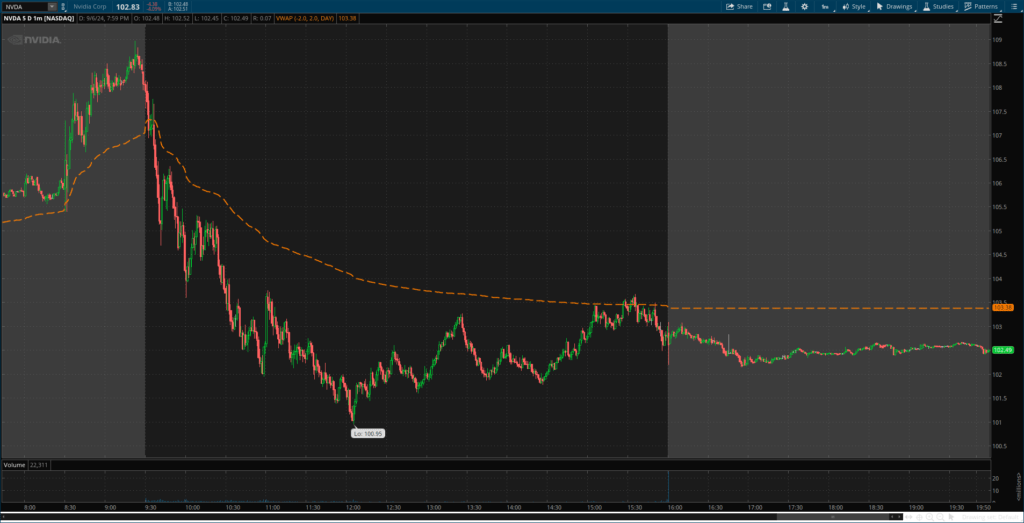3 Best Swing Trading Strategies
3 Best Swing Trading Strategies
In the dynamic world of financial markets, swing trading stands out as a popular and effective approach for investors seeking to capitalize on short-term market movements. This article delves into the three best swing trading strategies, offering insights and practical tips for both novice and experienced traders.
Understanding Swing Trading: A Primer
Swing trading involves holding positions for several days to weeks, aiming to profit from price “swings” or short-term momentum. Unlike day trading, which demands constant monitoring, swing trading offers a more flexible approach, suitable for those with limited time to watch the markets.
Strategy 1: Trend Following
Trend Analysis: The Backbone of Swing Trading
- Identifying Uptrends and Downtrends
- Utilizing Technical Indicators: Moving Averages and MACD
Entry and Exit Points: Timing Your Trades
- Recognizing Bullish and Bearish Signals
- Setting Stop Losses and Profit Targets
Strategy 2: Breakout Trading
Spotting Breakouts: Finding Opportunities
- Understanding Support and Resistance Levels
- The Role of Volume in Confirming Breakouts
Breakout Strategy in Action: Case Studies
- Examples of Successful Breakout Trades
- Analyzing Failures: Learning from Mistakes
Strategy 3: Counter-Trend Trading
Going Against the Grain: A Contrarian Approach
- Identifying Overbought and Oversold Conditions
- Using Oscillators: RSI and Stochastic
Risk Management: Balancing Reward and Risk
- Counter-Trend Trading Do’s and Don’ts
- Balancing Aggressiveness with Caution
Swing Trading Tools and Resources
Essential Software and Platforms
- Charting Tools and Software Recommendations
- Leveraging Financial News and Analysis
Educational Resources for Swing Traders
- Books, Courses, and Online Communities
- Continuous Learning and Skill Development
Swing Trading Psychology and Mindset
Emotional Discipline in Trading
- Coping with Losses and Managing Greed
- The Importance of Patience and Persistence
Developing a Trading Plan
- Personalizing Your Swing Trading Strategy
- Setting Realistic Goals and Tracking Performance
Swing Trading Vs. Other Trading Styles
Comparing Day Trading, Swing Trading, and Position Trading
- Time Commitments and Lifestyle Considerations
- Risk Profiles and Potential Returns
Adapting to Market Conditions
- When to Swing Trade and When to Steer Clear
- Market Cycles and Economic Indicators
Swing Trading Case Studies and Success Stories
Real-Life Examples of Winning Trades
- Analyzing Successful Swing Trades
- Lessons from Experienced Swing Traders
Overcoming Challenges in Swing Trading
- Handling Market Volatility and Uncertainty
- Strategies for Continuous Improvement
FAQs on Swing Trading Strategies
- What are the key indicators to watch in swing trading? In swing trading, key indicators include moving averages (like the 50-day and 200-day), the Relative Strength Index (RSI), the Moving Average Convergence Divergence (MACD), and Bollinger Bands. These tools help traders identify trends, momentum, and potential reversal points in the market.
- How much capital is needed to start swing trading effectively? The required capital for swing trading can vary widely based on individual risk tolerance and the specific markets being traded. However, a common suggestion is to start with at least $10,000 to allow for diversification and to manage risk effectively. Remember, it’s important to only trade with money that you can afford to lose.
- Can swing trading be a full-time career? Yes, swing trading can be pursued as a full-time career, but it requires significant dedication, discipline, and skill. Successful full-time traders often have a deep understanding of the markets, a well-tested trading strategy, and the ability to manage risk and handle the psychological pressures of trading.
- How does swing trading differ from long-term investing? Swing trading involves holding positions for a few days to several weeks to capitalize on short-term market movements. In contrast, long-term investing typically involves holding positions for years or even decades, focusing on the long-term growth potential of assets. Swing trading is more about capturing short-term market trends, while long-term investing is about riding out market ups and downs for eventual long-term gains.
- What are the common mistakes to avoid in swing trading? Common mistakes in swing trading include overtrading, not having a clear strategy, poor risk management, letting emotions drive trading decisions, and failing to keep up with market news and events that can impact trades. It’s crucial to learn from these mistakes and develop a disciplined approach to trading.
- How important is technical analysis in swing trading? Technical analysis is fundamental to swing trading as it helps traders identify potential entry and exit points based on market trends and patterns. While some traders may also use fundamental analysis, technical analysis is typically more emphasized in swing trading due to the short-term nature of the trades.
By understanding and addressing these FAQs, you can gain a deeper insight into swing trading and improve your approach to this investment strategy.
Conclusion: Mastering Swing Trading for Financial Success
Swing trading offers a unique blend of strategy, analysis, and psychology, making it a compelling approach for traders seeking to exploit market trends without the intensity of day trading. By understanding and applying these three best swing trading strategies, investors can enhance their trading skills, manage risks effectively, and aim for consistent profits in the financial markets.If you want to check our live trading rooms please click here.
Happy Trading,

About The Author:
Billy Ribeiro is a renowned name in the world of financial trading, particularly for his exceptional skills in options day trading and swing trading. His unique ability to interpret price action has catapulted him to global fame, earning him the recognition of being one of the finest price action readers worldwide. His deep comprehension of the nuances of the market, coupled with his unparalleled trading acumen, are widely regarded as second to none.
Connect with us:





